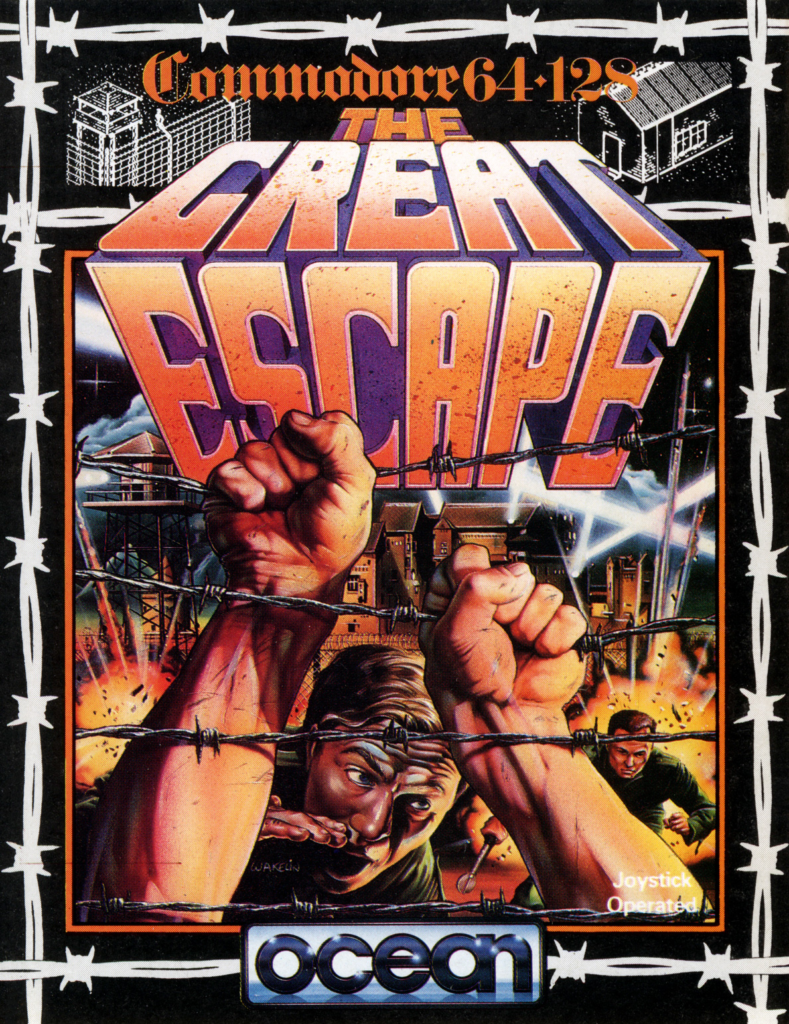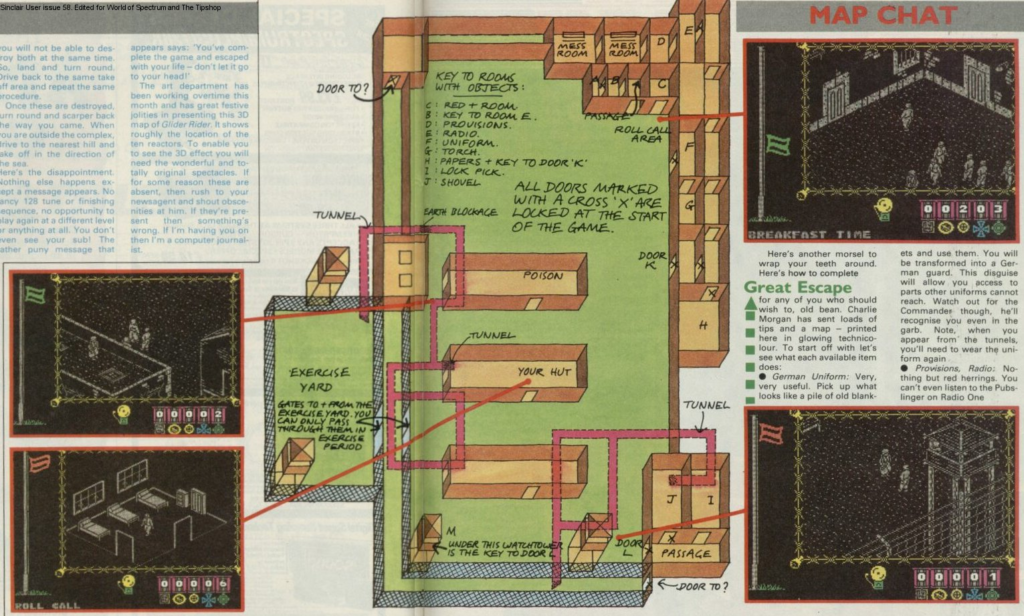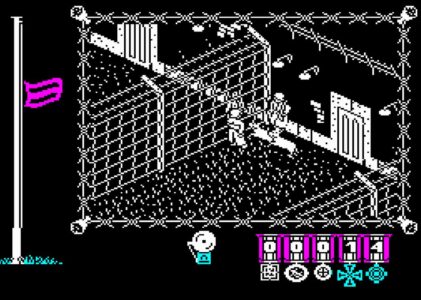Unlocking the Secrets of this Iconic Game
In the realm of classic video games, “The Great Escape” stands as a true gem, a pioneer of adventure gaming that left an indelible mark on the industry. Released in 1986, this game seamlessly blended elements of strategy, puzzle-solving, and action, captivating the hearts of gamers on various platforms. Join us as we embark on a journey to rediscover this timeless masterpiece, from its inception to its enduring cultural legacy.
Genre and Platforms
A Genre That Defined an Era
“The Great Escape” is often categorized as an action-adventure game, a genre that thrived in the 1980s. Developed by Ocean Software and inspired by the iconic 1963 film of the same name, the game transported players to the tumultuous setting of a World War II prisoner-of-war (POW) camp. In a world dominated by platformers and shooters, “The Great Escape” was a refreshing departure, combining elements of strategy, stealth, and exploration.
Platforms that Ignited a Revolution
Upon its release, “The Great Escape” was made available on several platforms, widening its reach and leaving an indelible mark on gaming history. It was initially launched for the ZX Spectrum, an iconic 8-bit home computer, and later found its way to the Commodore 64 and Amstrad CPC. This multi-platform approach ensured that gamers of all preferences could experience the thrill of escaping a POW camp.
Gameplay
Plot and Objective
Set in the fictional “Colditz Castle,” players assumed the role of a British prisoner attempting a daring escape. The game revolved around the player’s quest to break free from the confines of the notorious German prison camp. The ultimate goal was to plan and execute a successful escape, navigating through a labyrinthine castle while evading guards and solving puzzles.

Isometric Perspective
One of the game’s most distinctive features was its use of an isometric perspective. This top-down view allowed players to navigate the castle’s intricate layout and interact with objects and fellow prisoners with ease. It was a groundbreaking choice at the time, setting “The Great Escape” apart from other games of its era.
Exploration and Puzzle-Solving
The gameplay revolved around exploration and puzzle-solving. Players had to search for items, converse with other prisoners to gather information, and decipher clues to formulate escape plans. These elements required a keen eye and sharp intellect, making the game as much about mental acumen as it was about dexterity.
Stealth and Action
“The Great Escape” balanced cerebral challenges with moments of intense action. Escaping guards demanded a combination of stealth and quick reflexes. Players had to hide in shadows, time their movements carefully, and occasionally engage in physical confrontations with the vigilant German soldiers.
Key Gameplay Features
Complex Interactions
One of the game’s standout features was its complex interaction system. Players could engage in conversations with other prisoners, obtaining valuable information crucial for planning escapes. The choices made during these interactions often had far-reaching consequences, adding an element of strategy to the game.

Real-time Clock
“The Great Escape” incorporated a real-time clock that dictated the activities of both the player and the AI-controlled characters. This added an extra layer of realism and tension, as players had to manage their time wisely to avoid getting caught by patrolling guards.
Multiple Endings
Depending on the decisions made throughout the game, players could experience multiple endings. This encouraged replayability, as gamers sought to unlock all possible outcomes, adding depth to the overall experience.
Attention to Detail
The game’s attention to historical accuracy and detail was commendable. From the layout of the prison camp to the uniforms worn by the characters, “The Great Escape” strived for authenticity, immersing players in the World War II era.
Strategies and Cheats for The Great Escape
“The Great Escape” was notorious for its challenging gameplay, prompting players to seek strategies and cheats to aid their escape attempts. While purists may frown upon cheating, these methods added an extra layer of intrigue to the game.

Save States
Many players utilized save states, a feature available on some emulators, to record their progress at critical points in the game. This allowed them to experiment with different strategies without fear of losing hours of progress.
Walkthroughs and Guides
Printed guides and walkthroughs became invaluable resources for gamers struggling to navigate the complexities of the game. These guides provided step-by-step instructions, puzzle solutions, and strategic tips.
Infinite Lives
Some versions of the game had cheat codes that granted players infinite lives, easing the difficulty level considerably. While this may have diminished the challenge, it allowed players to fully explore the game’s narrative and multiple endings.
Reviews and Cultural Impact
Critical Acclaim
“The Great Escape” received widespread critical acclaim upon its release. Critics praised its innovative gameplay, historical accuracy, and captivating narrative. It was seen as a pioneer in the adventure game genre, pushing the boundaries of what was possible in interactive storytelling.
Enduring Legacy
The game’s influence extended far beyond its initial release. It inspired a generation of gamers and game developers, serving as a blueprint for future adventure games. Its isometric perspective, complex interactions, and focus on narrative paved the way for classics like “Metal Gear” and “Deus Ex.”
Cultural References
“The Great Escape” also left its mark on popular culture. References to the game can be found in movies, television shows, and even other video games. Its impact on the gaming industry as a whole cannot be overstated.
Sequels and Examples of Similar Games
Sequels
“The Great Escape” spawned several sequels and adaptations over the years. “The Great Escape II: The Untold Story” continued the saga, offering new challenges and storylines. These sequels aimed to capture the essence of the original while expanding on its gameplay and narrative.
Similar Games
“The Great Escape” was a trailblazer in the world of adventure gaming, and its influence can be seen in many subsequent titles. Games like “Escape from Alcatraz” and “The Escapists” drew inspiration from its blend of strategy, stealth, and puzzle-solving. These games continued to evolve the genre, adding new layers of complexity and immersion.
In the annals of gaming history, “The Great Escape” is more than just a game; it’s a testament to the enduring power of innovative gameplay and storytelling. Its impact on the adventure game genre, its challenging puzzles, and its immersive narrative have solidified its place as a classic. As we look back at this iconic title, we’re reminded of the excitement and wonder it brought to the gaming world in 1986 and the legacy it continues to uphold today.

